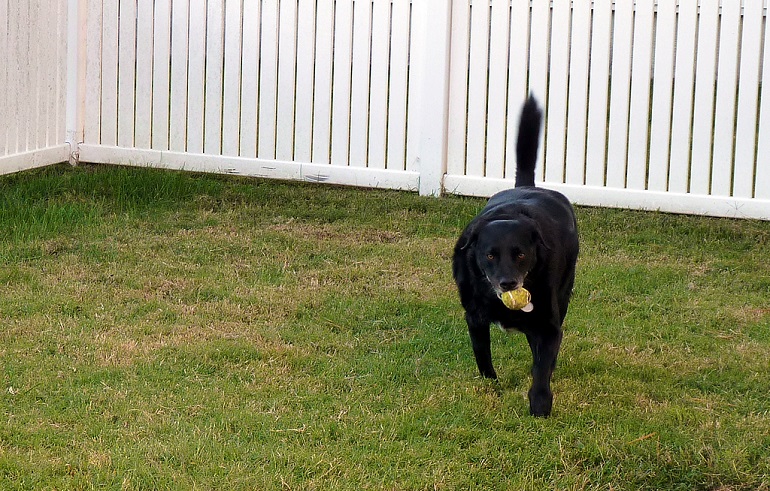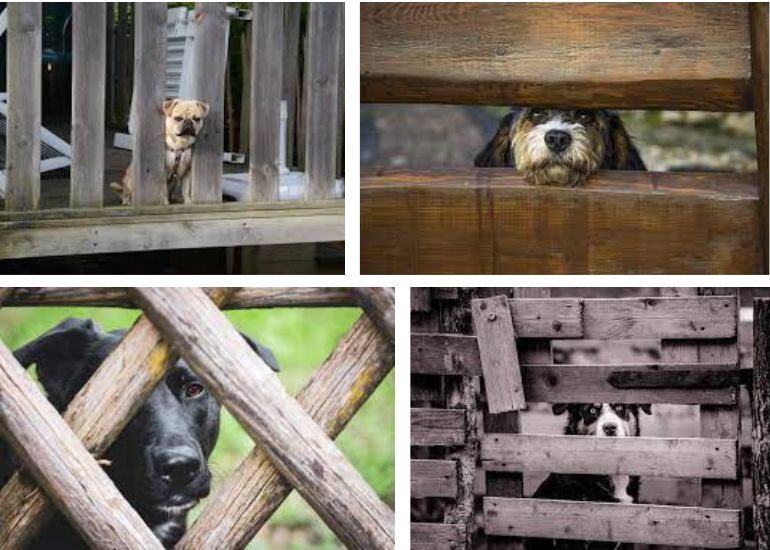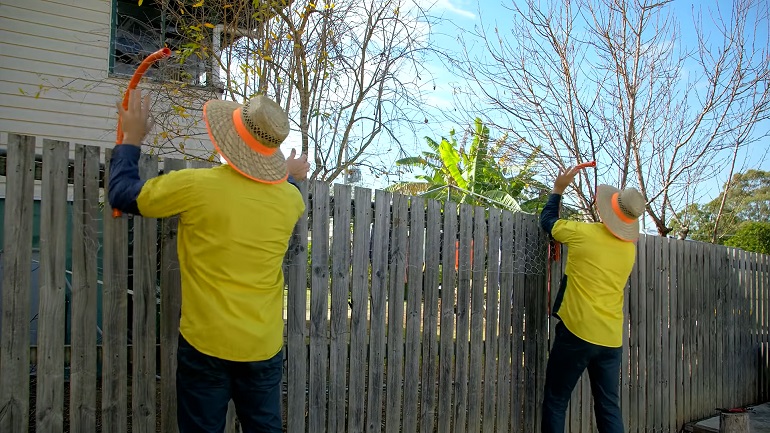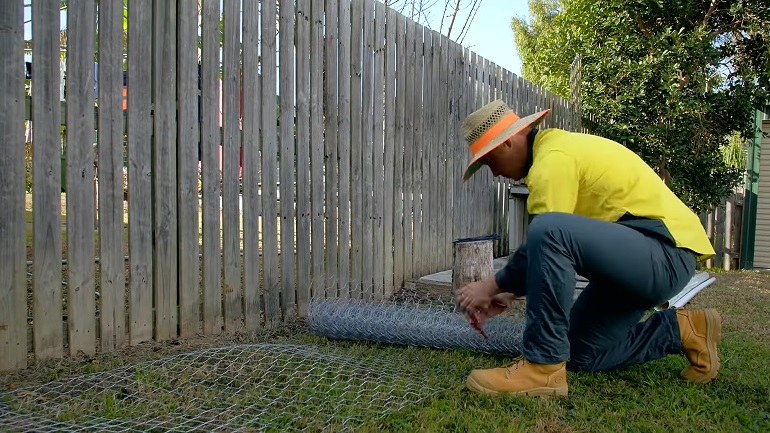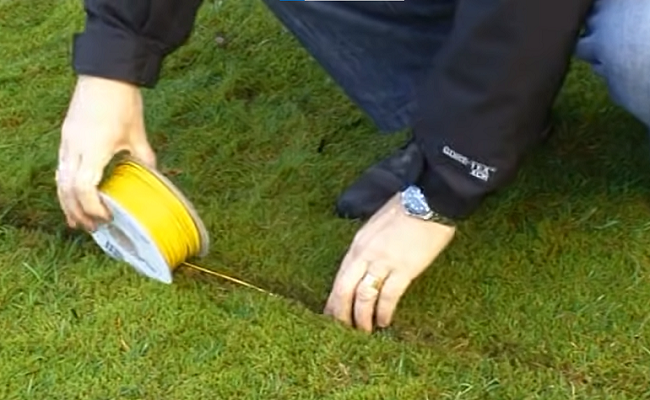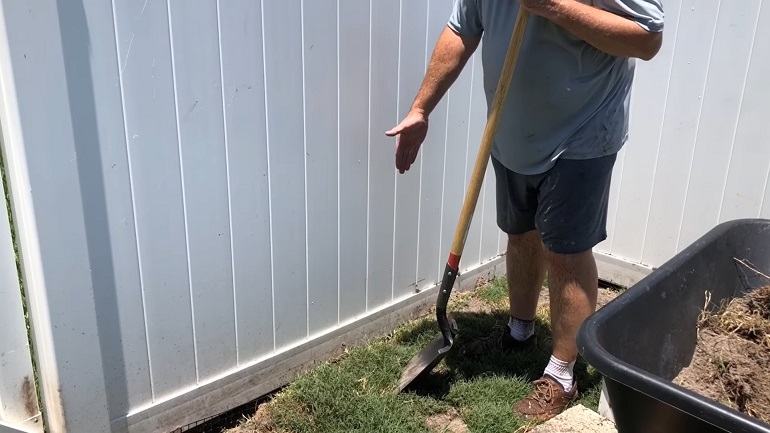Ensuring your backyard fence is dog-proof is essential for the safety and well-being of your furry friend. Whether you have a curious puppy or a strong jumper, preventing escapes and keeping your pet protected can give you peace of mind. In this guide, “How To Dog Proof Fence? All You Need To Know,” we delve into practical solutions and innovative strategies to fortify your fence, making it both secure and durable. From selecting the right materials to implementing clever design hacks, equip yourself with all the knowledge needed to create a safe haven for your beloved canine companion.
My friend’s dog Coco is a master escape artist. To take her on walks, you have to attach a leash to her harness and a leash to her collar just in case she wriggles out of one. Opening the gate to their fenced-in yard is a little bit nerve-wracking every single time.
My mother-in-law’s dog, Benny, manages to leave his dog run by leaning on the fence line until a gap is created (he’s really big and heavy!). He usually just goes and snoozes on the front porch when he gets out, but he has also chased after vehicles too.
We once had a neighbor’s dog jump over a six-foot-tall privacy fence and get stuck in our yard because he couldn’t jump back. Luckily he didn’t end up roaming free along a nearby busy road.
Moral of the story: Just because you have a fence doesn’t mean your dog is perfectly safe. You may need to do some extra dog-proofing to keep your pup safe.
What Is Dog Fencing?
Dog fencing simply refers to a variety of modifications you can make to your property to keep your dog safely contained. There are fencing options that can work with a chain link fence, a wooden fence, or any other type of existing fence you may have.
To get started with dog-proofing your fence, you’ll want to consider the condition of your current fence. Slowly wander around the perimeter of your yard and look for damage or potential weak points.
Also, consider your dog’s personality. Is your dog a digger, a jumper, or an escape artist? Each issue will require a different solution.
Note: Anytime a dog is trying to leave their yard, it is helpful to find out why. Some sort of canine education with a professional trainer can help you figure out what’s going on with your pup so that you can better protect them.
Some Best Ways To Dog Proof a Fence
Landscaping
One way to dog-proof a fence is with strategic landscaping. If your dog is either a jumper or a digger, planting dense shrubs around the inside of the fence line can help.
Your dog won’t be able to get close enough to the fence to dig out, and there will be shrub roots in the way if they try to dig from further out. It’s hard to get a good running jump or to climb out if there are shrubs blocking the path as well.
If your dog is fence fighting, which means that they are getting aggressive with another dog on the other side of a barrier, landscaping can help keep them from getting so close to the fence.
Another benefit of using landscaping, especially if you have a chain link fence, is that it will block your dog’s view. Many dogs desire to leave their backyard because of something they see, like a delivery truck, a neighborhood cat, or other dogs.
L-Footing
Installing an L-footer is a fabulous way to deter a digger. This works best if you have some sort of wooden fence or picket fence already because you need to be able to attach the L-footer to your current fence.
You can DIY this with some chicken wire by attaching the top half of the chicken wire to the bottom of your fence (on the inside). You will fold the excess wire so that it is on the ground, creating an L shape with your fence and the ground.
You can then bury or cover it so that if your pup decides to dig, they will hit the wire and not be able to dig out and in this way, you can stop your dog from digging.
Redundant Fences
One of the more extreme-sounding ways to dog-proof your fencing is to add some sort of redundant fence — an extra fence inside or outside of what you have currently. You could do this by purchasing a doggy playpen or by using an invisible fence. Both of these are actually quite simple!
Playpen or Dog Run
A playpen is basically freestanding fencing that you can set up on your property. Generally, these are fairly short and small, so would be best used for little dogs.
For big dogs, you could install a dog run on your property for an extra level of containment. Some dog runs have a roof to prevent jumping out. They are usually on the smaller side, so not a great option for leaving your dog in for long periods of time.
Invisible Fence
There are multiple types of invisible fences. A wireless electric fence is super quick to install and quite affordable. It will add an extra layer of security to your backyard. Your dog will receive some sort of feedback warning on their collar anytime they approach the wireless boundary.
You can also get a GPS advanced tracking collar that will allow you to know where your dog is at all times for full peace of mind. You can easily travel with this sort of system as well.
Lean-Ins
Another option for dogs who jump or climb the fence is to install lean-ins. These are additions to the top of your fence that literally lean in towards your backyard, making it impossible for your dog to get out. Dog owners who have chain link fencing can purchase easy-to-install kits that add on to their current metal fences.
For privacy fences, you can purchase extender arms which are long metal bars that get screwed into the top of the fence.
Coyote Rollers
Another way to keep your yard secure is to install coyote rollers. Coyote rollers are a simple and humane way to keep your dog safe in the yard and keep all other animals out.
You install metal bars or a strong cord to the top of your fence with a free-moving tube like a PVC pipe on the bar. Anytime your dog tries to jump out, their paws will spin on the roller, and they won’t be able to get out. The same thing happens if wild animals try to jump into your yard. Win-win.
Coyote rollers can be added to any kind of fence (including wrought iron or aluminum fences) to keep dogs from jumping the fence. There are kits that you can purchase, or there are many ways to DIY this project.
Concrete Footer
One extremely durable option for keeping your yard secure, especially for strong dogs who tend to excavate, is to add a concrete footer along your fence. This is easier to do if you are building a new fence, but you can still accomplish it for an existing fence.
You’ll want to create a small trench all along the fence line and then pour in the concrete. This will deter digging along the perimeter of your yard.
Airlocks
If you’ve got good dog-proof fencing, but your dog rushes the gate anytime it is opened, an airlock is a really great solution to keep your dog safe.
Dog parks use airlocks to make sure no dog escapes when a new dog arrives, so if you want to see what this looks like in action, head to your nearest dog park.
To add an airlock to your property, you’ll add some fencing and another gate a few feet before your current gate. Anytime you enter, you will walk through one gate and close it (entering the airlock) before you walk fully into the yard.
Final Thoughts
As a dog owner, I know firsthand that dog-proofing our yard to make it a secure place for our pups to play is worth every bit of effort. It brings me massive peace of mind!
Different dogs will require different fencing options. Small dogs like mine aren’t ever going to jump the fence, but they could burrow or sneak out through broken sections. We always make sure to block our dog’s view so that they aren’t tempted to run off after the neighbor’s cat (aka their nemesis).
I hope this article has shown you some options you haven’t thought of before so that you can do some dog proofing to your fences!
In conclusion, effectively dog-proofing your fence involves a combination of strategies that ensure the safety and security of your pet. Start by choosing the right materials and design to prevent escape attempts. Reinforce weak spots, install dig guards, and consider adding barriers or extensions for extra protection. Regularly inspect and maintain the fence to address any vulnerabilities promptly. Also, consider your dog’s unique behaviors and needs to tailor your solutions accordingly. By taking these comprehensive steps, you can create a secure outdoor environment that allows your dog to explore safely and gives you peace of mind.

